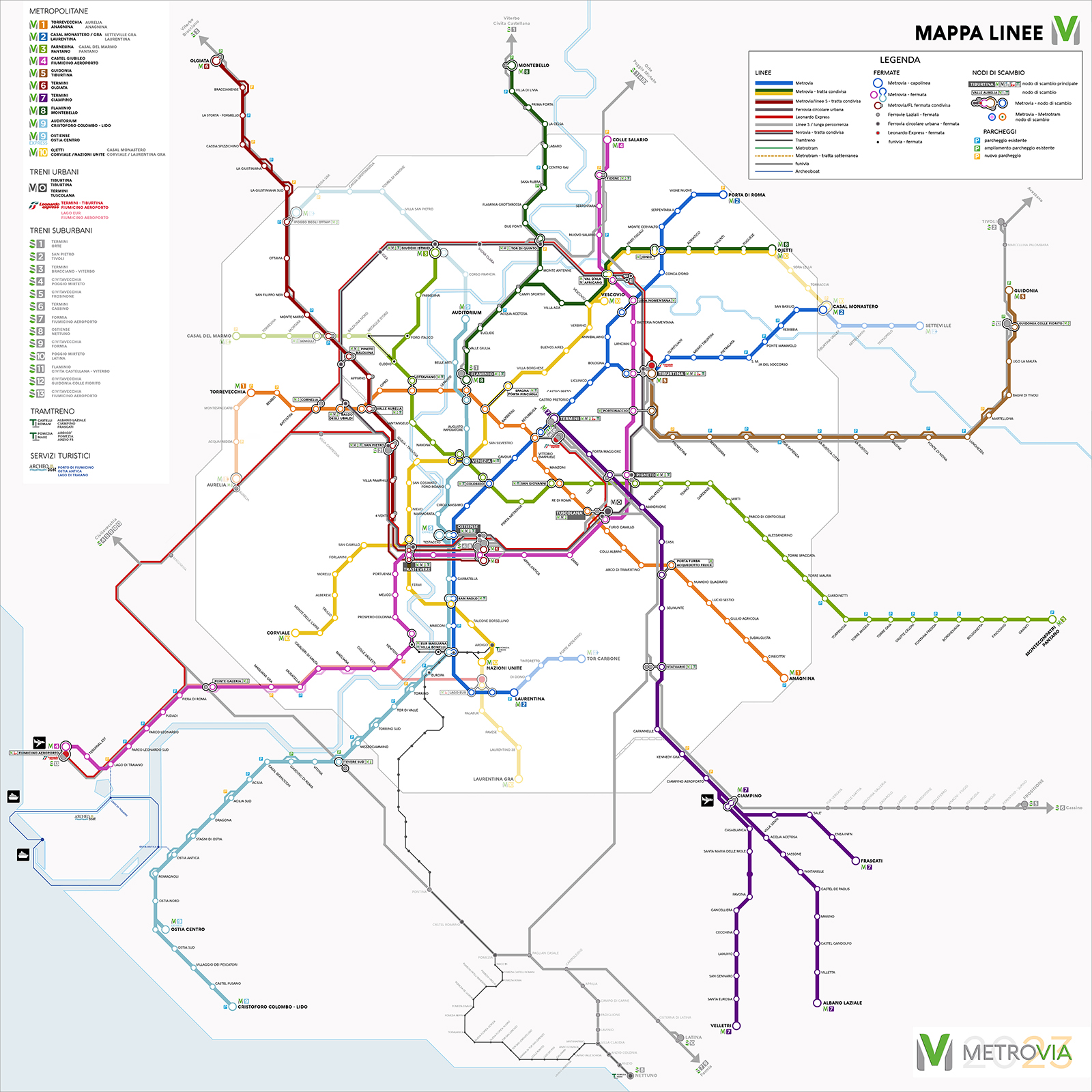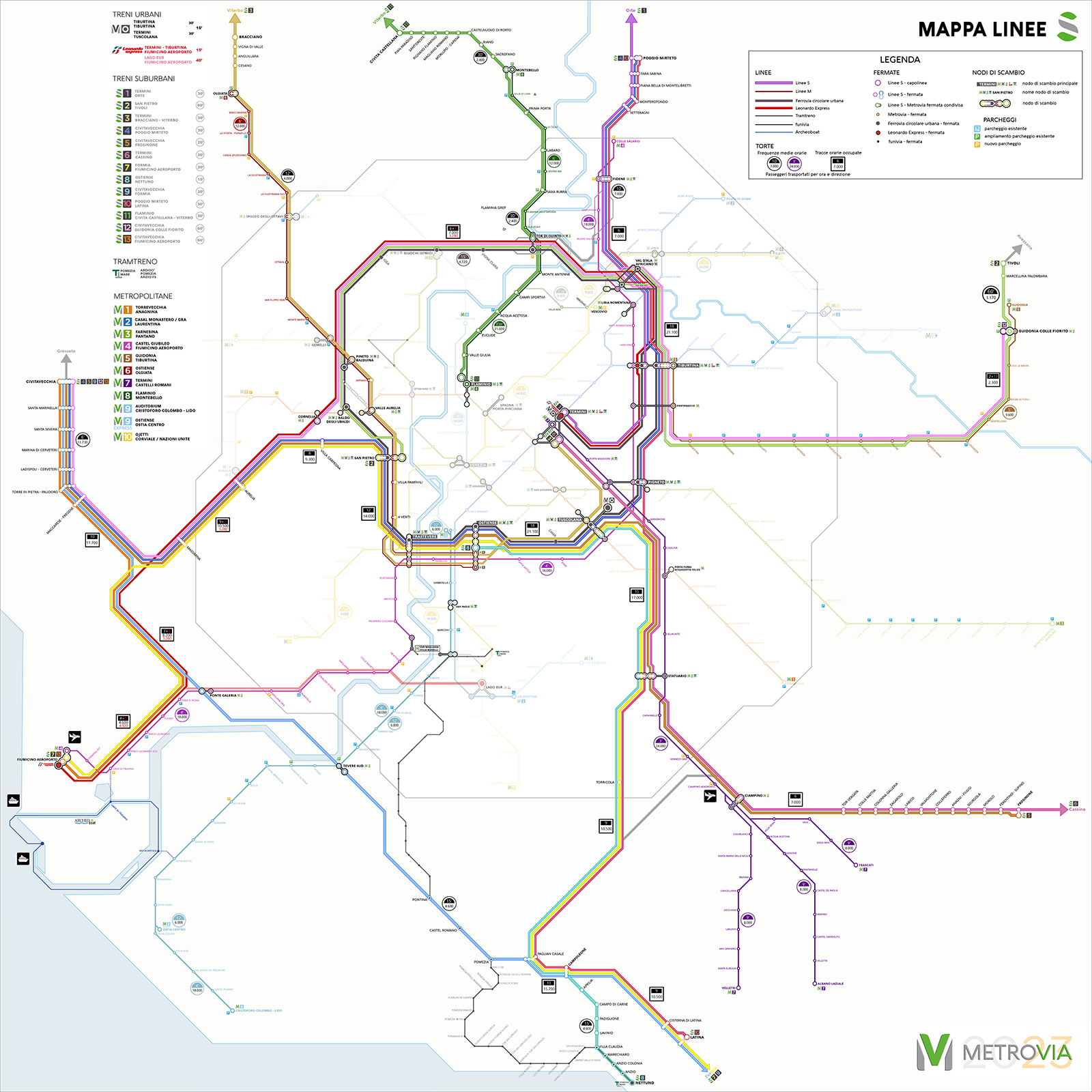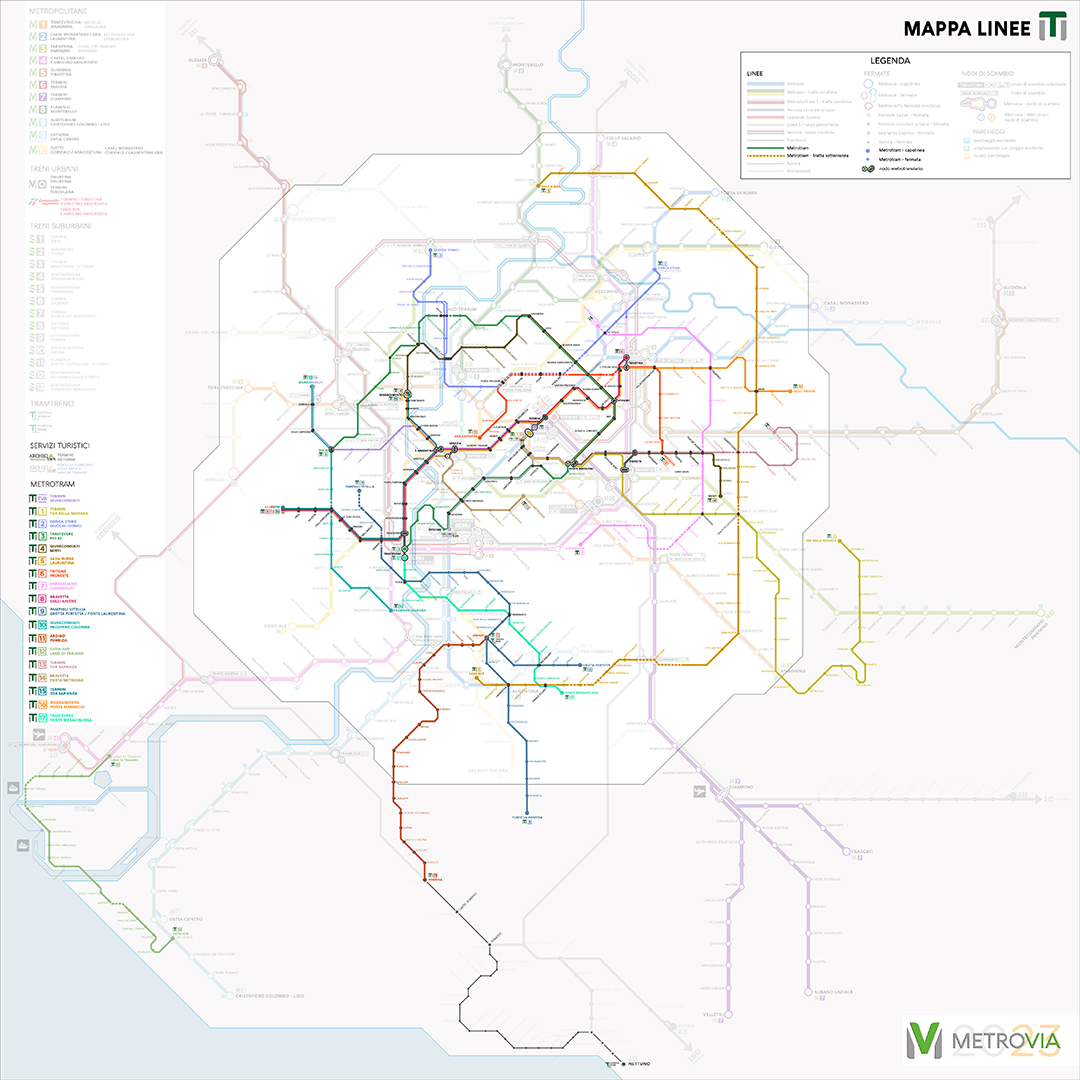
MetroVia
A design proposal for a metro network for Rome, Italy.
Inspired by the Berlin S-Bahn network, Metrovia proposes to make proper metro lines using the already existing surface rail network, with proper metro trains, with urban layout, instead of suburban trains.
This is possible thanks to a new technological improvement, the HD ERTMS (European Rail Traffic Management System, High density) that permits to increase the frequency of trains on existing tracks, by decreasing the safe distance till a barely 300m in urban nodes.
Hence an increase of frequency is possible, until a train every 2 and a half minutes, wich is same as a metro.
Besides this, we propose to adopt new rolling stock, with acceleration and vehicle architecture same as a metro: shorter trains, with more standing passengers and seats along the sides, 4 doors per coach side, high adn continuous floor, no steps, leveled platforms.
And, last but not least, we propose a great increase of train stops, in order to have one per km, more or less. The higher desity of stops, in urban area, would increase accessibility of transit, getting more population (residents and workers) withing walking distance from a metro stop.
Metrovia consists in:
10 Metro Lines (+1)
 These lines are marked with the "M" sign.
These lines are marked with the "M" sign.Metrovia adds 4 new metro lines made from surface rails to the existing 3 undergound lines. Including one new underground line and upgrading to metro standards the other two existing urban rails (Lido and Nord), the total sums up to a 10 lines metro network, with more than 100 new stops and 35 interchange stations.
In addition to this, a new Circle Line, on the surface rails surrounding Rome city center, existing and planned, connects all the other lines.
13 Suburban Lines

These lines are marked with the "S" sign.
While the new metro trains increase capillarity in urban areas, commuters need faster trains to reach their final destination. Stops are more distant, connecting towns.
Suburban trains stop only at major stations and interchanges, reducing travel time.
The 13 lines connect different areas and major cities of Lazio region through the ring around Rome centre (exchanging passengers with the metro network), while connecting destination in the larger metropolitan area. Only three S lines would connect to Termini, currently the overcrowded major train station of Rome, while one, S9 would just cross two metro lines in the suburbs.
18 Metrotram Lines (+2)

These lines are marked with the "T" sign.
Metrotram service is faster than traditional tramways, thanks to the infrastructure design:
- greater average stops distance (350-500m instead of 250-350m);
- tracks on separate and exclusive path;
- priority at traffic signals;
- commercial speed higher than 18km/h;
- and last but not least, grass padded tracks (site specific).
Besides Metrotram lines, Metrovia proposed two more lines: a TramTrain serving cities near the sea south to Rome, and the ArcheoTram, a tourist service for monuments spotting and hop on-hop off guided tours.
For the full design proposal please visit MetroVia website.
MetroVia team members are:
- Arch Paolo Arsena
- Corrado Cotignano
- Florestano Pastore
- Marina Stoppelli
